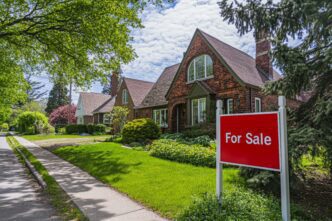Executive Summary
- The Trump Administration is exploring a 50-year mortgage plan to lower monthly payments and address housing affordability.
- While monthly payments could decrease, the total interest paid over the life of the loan could nearly double compared to a 30-year mortgage.
- Economists warn the plan could inflate home prices by increasing buyer demand without addressing the low supply of homes for sale.
- Homeowners would build equity at a significantly slower rate, limiting their financial flexibility for years.
The Trump Administration is developing a 50-year mortgage plan intended to increase housing affordability by lowering monthly payments for prospective buyers, a proposal confirmed by the Federal Housing Finance Agency. While the plan aims to stimulate a slow housing market by making homeownership more accessible, housing market analysts have raised significant concerns about its potential long-term financial consequences for both consumers and the market at large.
The Math Behind the Monthly Savings
The primary appeal of the 50-year mortgage is the reduction in monthly costs. Using Denver’s median home price of $560,000 as an example, a buyer making a 10% down payment on a $504,000 loan could see their monthly payment decrease by approximately $325. However, this short-term relief comes at a steep price. Over the full term of the loan, the total interest paid would nearly double, increasing from roughly $606,600 on a traditional 30-year mortgage to over $1.15 million on a 50-year note.
Expert Analysis on Market Impact
According to Joel Berner, Chief Economist at Realtor.com, introducing a product that increases purchasing power without increasing the housing supply could lead to unintended consequences. “Anytime we subsidize buyers, we give people who are looking for homes more buying power, and don’t increase the supply of homes for sale, we run the risk of driving home prices up pretty considerably,” Berner stated. He suggested that a surge in demand from new buyers could inflate home prices, potentially eroding the savings offered by the lower monthly payments.
Risks to Homeowner Equity
Another significant drawback highlighted by Berner is the substantially slower rate of equity accumulation. Because the principal is paid down over a much longer period, homeowners would build a smaller ownership stake in their property in the initial years. “After 10 years of being on a 50-year loan, you have a much lower stake of ownership in your home than you would on a 30 or a 15-year loan,” Berner explained. This could pose a problem for homeowners who wish to sell or refinance after five or ten years, as they would have less equity to leverage.
Demographic and Generational Considerations
The plan also raises questions given current demographic trends. The National Association of Realtors reports the average age of a homebuyer is an all-time high of 40. Under a 50-year mortgage, such a buyer would not own their home outright until age 90, well beyond the average U.S. lifespan of 78 years, effectively turning long-term homeownership into a generational debt.
In summary, while the proposed 50-year mortgage offers a potential solution to immediate affordability challenges, experts caution that it may create long-term financial burdens for homeowners, including higher overall costs, slower wealth creation, and the risk of further inflating home prices in a supply-constrained market.








